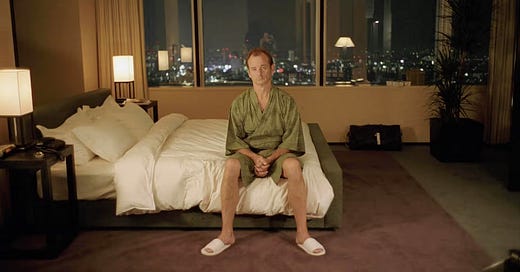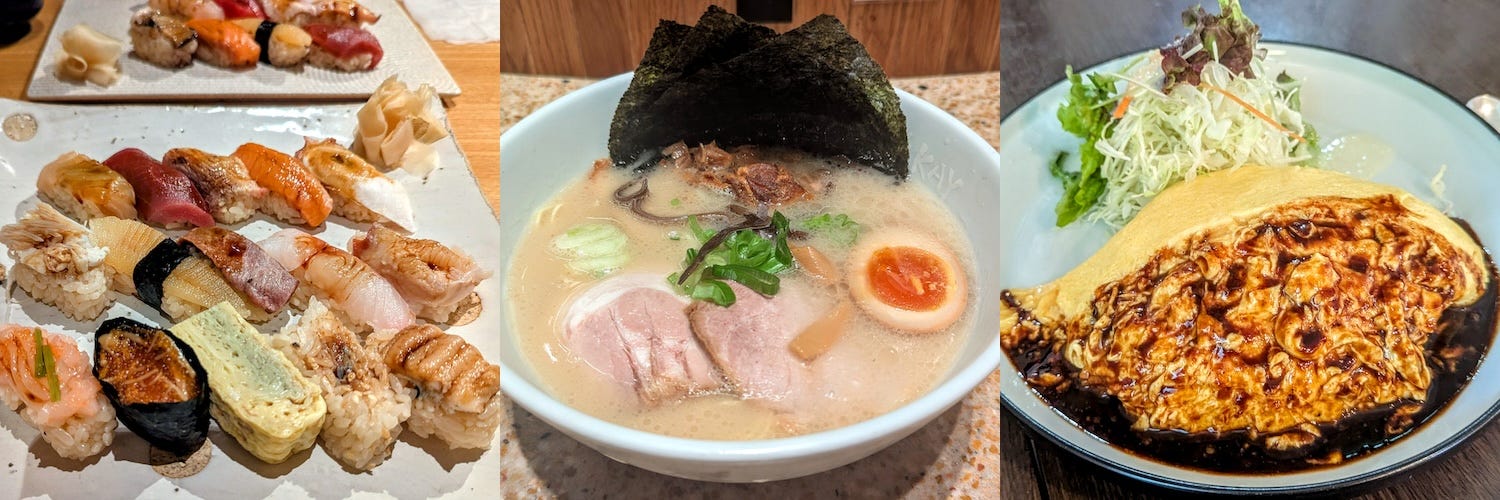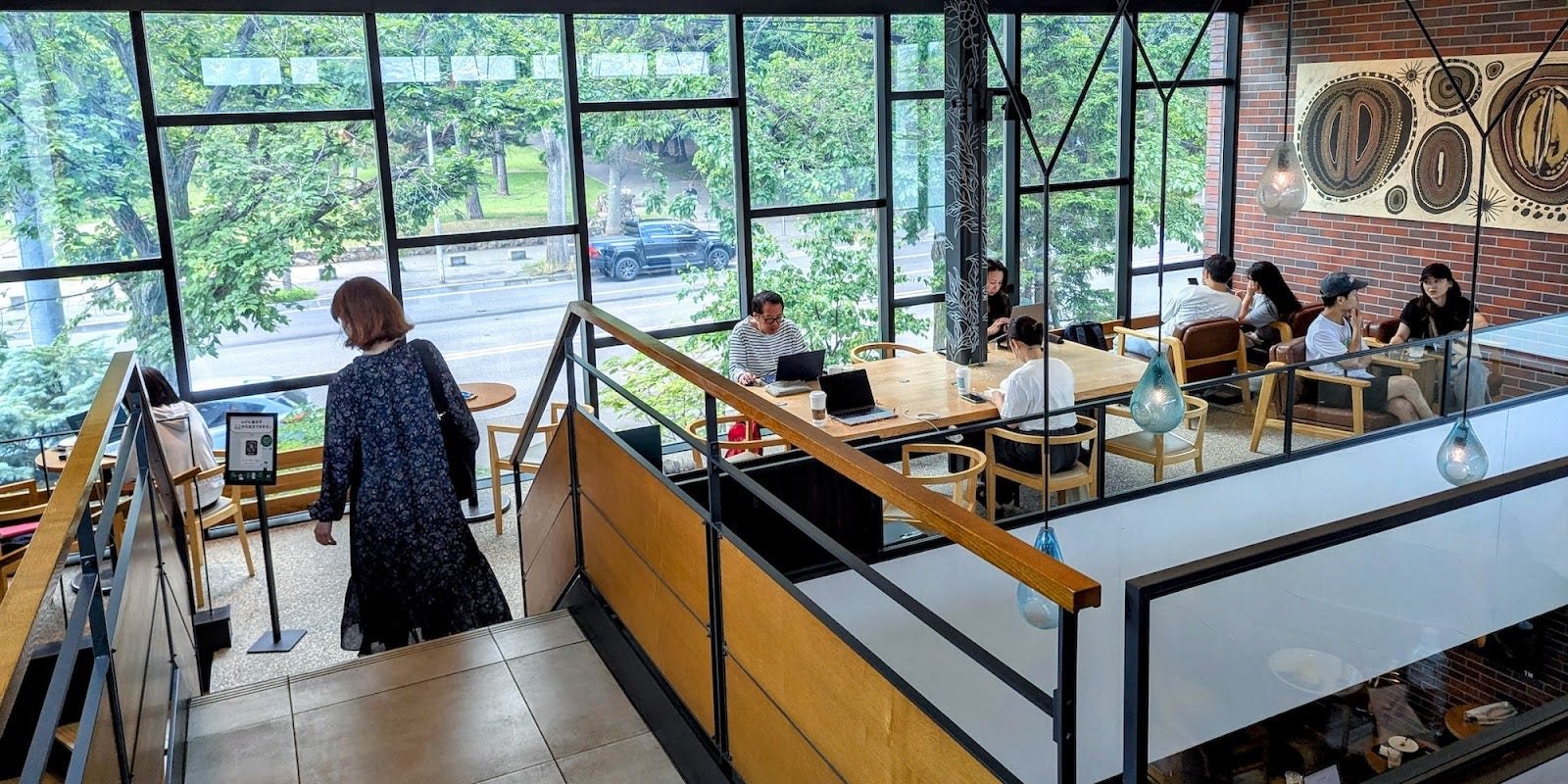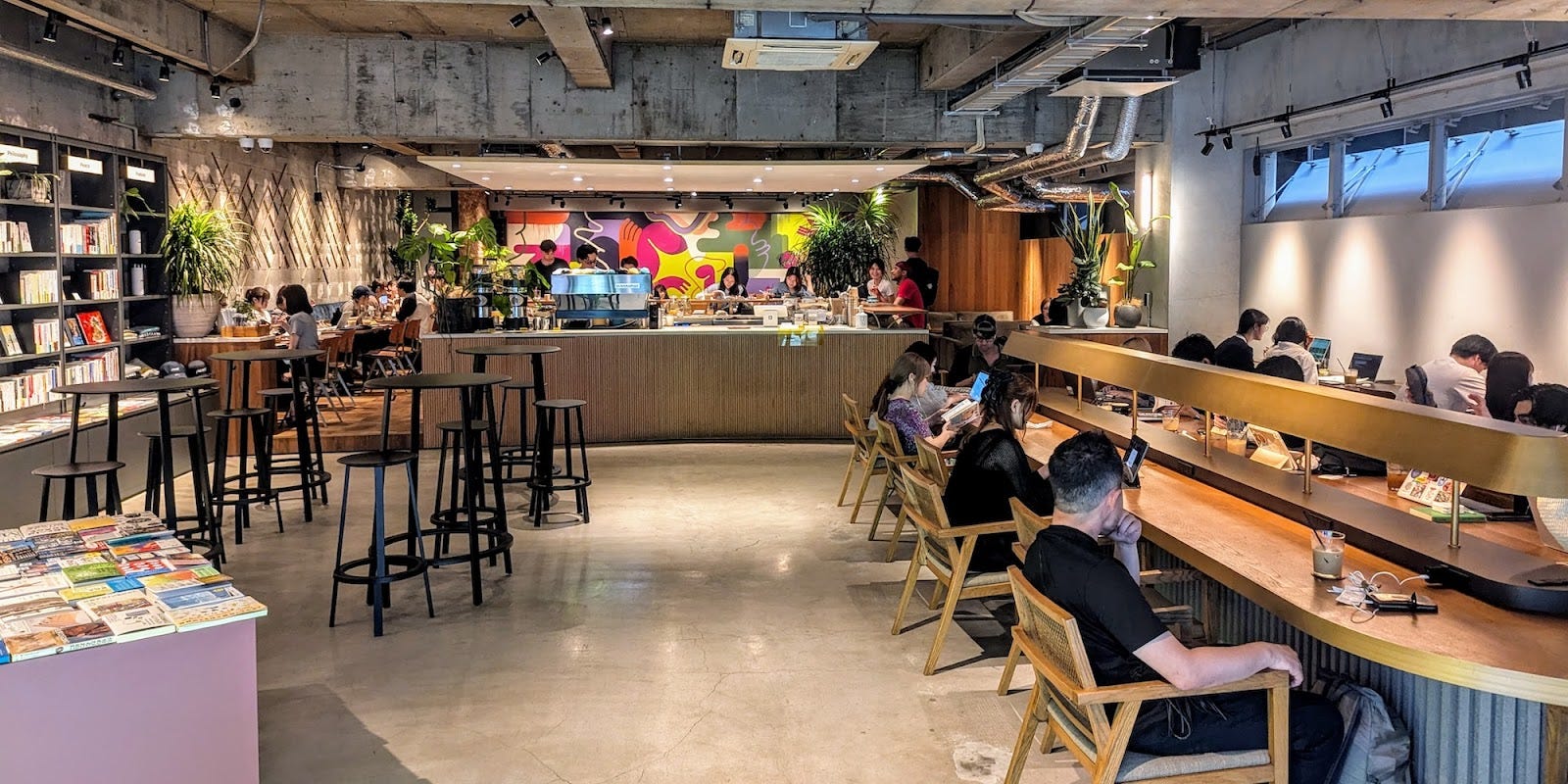It’s official: Japan is having more than just a moment; it’s in the middle of a record-shattering tourism boom. The numbers are staggering. In 2024, the country welcomed nearly 37 million international visitors, smashing the pre-pandemic record by five million people. They arrived with open wallets, spending ¥8.1T (about $53B), up nearly 70% from 2019. The trend is only accelerating this year; April and May 2025 saw a 43% and 60% jump in visitors from 2019, respectively. Americans are a huge part of this wave, with 60% more flocking to Japan than before, enjoying the historic lows of the yen.
My family and I are among the crowds. But, while we do enjoy how much further our dollars go, our story started long ago and for different reasons. Japan has been our summer retreat for as long as I’ve known my wife who grew up in Sapporo. For the last 16 years, we’ve made our way back to Japan. Eventually, we got married and of course hosted our wedding there. When our twin daughters were born, we didn’t hesitate to bring them along, as grueling as it was to have two screaming babies on an 11+ hour flight. Once they reached school age, we were fortunate enough to enroll them in the local school since in Japan studies continue through summer.
Due to my role at work, I could never stay the whole summer like my wife and daughters did. Being away for long stretches when teams and other leaders depend on you isn’t practical. Compromise was necessary to make a stay longer than a couple weeks work, so I committed to getting up at ungodly hours in order to start my meetings at 4am (noon in California). Always careful not to disturb my family at the wee hours, I would find creative ways to have meetings. Once I Zoomed from a closet, hunched down low underneath the hanging clothes; another time I found the bathroom to be the most insulated room, where I could have the lights fully on and speak at a normal volume.
Now, things are different. After an amazing 27-year career in Silicon Valley, I have for the first time walked away from a safe and secure job with no real plan for what’s next. Venturing into the unknown ahead, I’m not yet sure what’s in store; whether I’ll rejoin the daily grind, or build something new of my own, or simply enjoy being completely untethered. What I do know is that I have this time right now to myself and we’re in an unprecedented era of growth and innovation. I’ve been loving having the space to tinker, explore, play, and just enjoy life without worrying about someone else’s roadmap or OKRs. Best of all, I’m in Japan with no 4am meetings for which I need to hunch down in a closet. With my girls in school during the day, my wife catching up with old friends, I’m off on my own to explore and work on myself.
This, I think, is the long overdue sabbatical that I’ve always needed. A spiritual retreat to right myself, refresh my body/soul, and figure things out. My very own Eat, Pray, Love but instead it’s gonna be Eat (Ramen), Drink (Sake), Build (Cool Shit). And I get to do it in Japan of all places.
You may be in a similar spot, or maybe you just love getting out of your element and immersing yourself in an environment that fuels creativity. Either way, join me in my nomadding adventure; bouncing around the streets of Japan, exploring a foreign metropolis, and hacking away in public. Admittedly, I’m jumping the gun a bit since it’s only week two of my seven-week trip, and we’ve yet to hop over to Tokyo and Yokohama, but screw it I’m sharing anyway. Maybe there’ll be a follow up after Tokyo.
Why Japan
So, first things first: why Japan for a sabbatical or a working holiday? Of all the places in the world, what makes this country uniquely suited for a mental reboot? For me, it boils down to two simple truths: 1) it’s easy, and 2) there’s something for everyone.
First, Japan is deceptively easy. This is the most critical yet underrated aspect. If the goal is to find space to focus on yourself, the last thing you want is to waste mental energy fighting your environment. You do not want to be bogged down by logistical hurdles or constant low-grade anxiety. Japan’s entire society is a masterclass in system design that works to eliminate that friction, letting you focus on what truly matters.
It’s incredibly safe and clean: This is the foundational layer. The baseline of trust is so high that you can leave your laptop on a cafe table to use the restroom without a second thought. I once got so drunk I left my wallet in a taxi late at night, and to my surprise the driver ran after me down the street to return it! This feeling of safety removes a huge cognitive load you often don’t even realize you’re carrying.
The infrastructure just works: You DO NOT need a car at all. The public transportation system is a marvel of punctuality, cleanliness, and affordability that can get you almost anywhere. With a Suica/Pasmo card, the entire network of subways, trains, and buses is frictionless. Add to that the universal availability of clean public restrooms, and you can spend an entire day exploring a city without a single logistical worry.
You will never go hungry. Finding a good meal is never a concern. The konbini (convenience stores) are your 24/7 lifeline for high-quality, affordable meals, and the ubiquitous vending machines ensure a drink is never more than a few steps away. Beyond that, the sheer density of restaurants is staggering with Tokyo alone being home to ~140,000 restaurants. A world-class meal is almost always just a few steps away.
It’s surprisingly affordable. Beyond the great exchange rate, things in Japan are just plain affordable. There’s no tipping culture, and tax is almost always included, which means a ¥1200 bowl of ramen costs exactly ¥1200 (no added 18% tip and 9% tax). Restaurants don’t overcharge for beer, and you can hop across town (in a super safe and clean subway/bus) for less than $2. The price transparency, combined with the low costs of everyday items, mean you can have fun without breaking the bank.
Second, Japan is a playground for every curiosity. Once your mind is free from the friction of daily logistics, you need fuel for inspiration. This is where Japan truly shines. It offers a plethora of experiences so dense and varied it is impossible to get bored. It’s a country of fascinating contrasts, where deep tradition and off-the-wall modernity coexist, and there is something for every taste and budget.
For the foodies: Japan's food scene has astounding range and specialization. You can start your day with a delicious $1 onigiri from your local konbini, and end it with world-class sushi omakase tucked away down a quiet alley behind a nondescript storefront. For a fun, budget-friendly meal, try a standing sushi bar, or find a ramen shop where you place your order with an old-school vending machine. The drinking culture is just as varied, from quiet "listening bars" where you enjoy whisky while listening to vinyl, to finding a vending machine that dispenses hot sake. Alongside this is a booming specialty coffee culture, which means you can always get your single-origin pour-over fix when you need it.
For the nature lovers. The contrast between Japan's dense urban environments and its serene, accessible nature is remarkable. Escaping the crazy, dense cities is just a matter of hopping onto a train. From almost any major city, you can be in the mountains and onsen (hot springs) in under 90 minutes. Onsen is the first thing I miss when I leave Japan, so I recommend everyone learn about Japan’s communal bathing culture first hand–don’t be shy! In the spring, parks fill with cherry blossoms and with it hanami (viewing parties), a beautiful tradition that celebrates the fleeting nature of beauty. Even in the heart of the biggest cities, you can find immense parks and tranquil temple grounds that feel like portals to another world, offering a perfect escape from the urban energy.
For the geeks. This is where Japan's quirky extremes come to life. It’s where cutting-edge technology and imaginative fantasy collide in everyday culture. You can spend an entire day wandering through sprawling electronics districts with multi-story buildings filled with obscure components, arcades, and hobby shops. For a uniquely Japanese experience, check out maid cafes; it’s weird but there’s something for everyone! In the vibrant fashion districts of major cities, you will see everything from folks decked out in high fashion to otaku of all ages in full cosplay. Fans of animation can make a pilgrimage to world-renowned museums dedicated to the craft like Ghibli museum (in Tokyo), or nestle into a manga cafe with endless volumes to consume.
This combination of ease and endless fascination makes Japan the ultimate environment for a reboot. The country’s seamless operation handles your basic needs, while its rich and wonderfully weird culture provides a constant stream of inspiration.
Adventures in Workspaces
Some find respite in yoga and meditation, others feel the need to trek through a third world country. For me, I like to build–it’s my escape. So the cornerstone of my cleansing was finding a good spot to plant myself for eight hours a day and get lost in building. Whereas before I had limited options, now I could truly explore and find the perfect spot.
Before the trip, I had this idea that I would bounce around internet cafes. Watching some interesting YouTube documentaries about Japanese internet cafes got me curious, particularly the ones about homeless people living in them. I’d also been following a particular homeless YouTuber who shared his experiences, some of which were quite entertaining. So, armed with super reliable YouTube knowledge, that’s where I started.
Internet Cafes
Google Maps showed a ton of results of varying levels of quality. If not for my thoughtful wife, I would have chosen one on the sketchier side. Instead, I went with DiCE, a reputable chain with dozens of locations around Japan. It was across the street from a major station and in a busy part of town with plenty to do. Unlike internet cafes in most countries, Japanese ones have full amenities: private booths, showers, laundry, an extensive manga collection, and the big draw, a generous bar of (non-alcoholic) drinks and soft serve ice cream. The drink bar was glorious. It had everything from coffee and tea to sodas, soft serve ice cream, and even hot kabocha pumpkin soup. On top of that, you could order a variety of things, like ramen or curry, from their kitchen.
I booked an enclosed private room with a comfy chair for three hours, which cost about ¥1100. As soon as I sat down, reality sank in and I realized this was not for me. The room was clean but shockingly small and claustrophobic; pictures online seemed deceiving, or maybe this was just a classic "Japanese-sized" experience and I assumed otherwise. It felt like the room was designed for watching TV or napping, not for working. I could not connect my laptop to the monitor, and the ambient temperature was set to what felt like 78 degrees, a fairly normal setting for Japan in the summer. That heat, combined with the cramped space, really started to get to me. The wifi was usable at around 70 Mbps, but it was not the blazing speed I had imagined for an "internet cafe." It was a windowless, cave-like environment, which I guess is great if you are using it as a motel room to sleep off a long night. My adventure into the world of internet cafes was a bit of a mixed bag.
Verdict:
Overall: C
Pros: amenities, drink bar, food menu, location
Cons: dark, stuffy, silent, mediocre wifi, clientele
Wifi: 70 Mbps
Price: ¥2,000/day
Chain Cafe: Starbucks
After a bumpy start, I turned next to a more reliable option: Starbucks. There’re other chains too like Doutor and Komeda (both Japanese), but they’re not as spacious and Starbucks also has a slight edge on English-speaking staff. I tried three different locations around the city, and they were all surprisingly good for getting work done. A venti coffee costs ¥600 and got me through lunch without anyone batting an eye. More importantly, most Japanese Starbucks have dedicated sections with power outlets built into the tables, seemingly designed for nomads. Wifi is free and decent, clocking in between 25-50 Mbps, however I had to keep reconnecting every hour (I wonder if my VPN caused that). They get surprisingly busy regardless of the location, often filling up by 10am, but the general vibe is productive and respectful. The most astounding part is safety. I watched people get up and go to the bathroom, leaving their laptops and bags at their seats without giving it any thought. Completely blew me away. After some initial nerves, I started doing the same. My assessment is the risk of your things being stolen is extremely low (but exercise your own caution and don’t blame me). I found my groove by my second day at Starbucks and was able to plow through eight hours straight of coding.
Verdict:
Overall: B+
Pros: coffee, bright, vibrant, bathroom, safe, clean, location
Cons: public space, just OK wifi, no real food
Wifi: 35 Mbps
Price: ¥1,200/day (1 coffee/order every 4 hours)
Local Cafe: Poool
Seeking a more local feel, my third adventure led me to a place called Poool, which marketed itself as a space for "Espresso & Work." It was a beautiful, design-forward cafe with upscale furnishings and a laid back vibe. The staff spoke sufficient English and served excellent boutique coffee. An Americano was ¥600, which I found a bit pricey because it was quite small, but the quality was undeniable. You could say it was like Starbucks with similar amenities but fancier and with better wifi, which I reliably clocked at 200+ Mbps. With my coffee in hand and my VPN connected, I cranked for six hours without any real interruption. The place was empty when I arrived at 9am but it was packed by 10am and stayed that way all afternoon. It had a great, focused energy and similarly felt communal. One ding was that the restroom was in a side corridor, so I had to exit the cafe to use it. It was still OK to leave my laptop and bag at my seat, but that was the limit of my comfort. It was great but in the end I’d say it was a hair below Starbucks. While it was in a great location filled with scenery and lunch options, it was a bit of a hike and I couldn’t say it’s worth going out of my way to work there. Next time I’m in the neighborhood, I’d definitely stop by.
Verdict:
Overall: B
Pros: coffee, bright, vibrant, clean, location, great wifi
Cons: public space, no real food, inconvenient bathroom, pricey
Wifi: 200 Mbps
Price: ¥1,200/day (1 coffee/order every 4 hours)
Co-Working Space
Finally, I found a proper co-working space in midtown called Kaeru, which turned out to be a game changer (and of course, it was my brilliant wife’s original suggestion to begin with). The entire experience is a lesson in seamless automation. I booked a day pass online for ¥1,760 (~$11), which is actually pretty cheap all things considered. The website was in Japanese, but Google Translate handled it perfectly. Once I paid, I received a QR code, which granted me access to the space for the day (from 9am to 7pm). The office is completely unmanned; you just scan your code at the door. It was a clean, quiet, and relaxing space with smooth jazz playing overhead. Unlike American co-working spaces which I’ve experienced to be quite active with frequent social activity, this place is pretty heads-down and quiet. Just a handful of folks filled the space. The best part is the wifi, clocking in at an incredible 400+ Mbps, the fastest by a huge margin. Since it was a private space, I could leave my stuff there and grab lunch nearby. For a solid day of deep, focused work, it was perfect. One thing to note is that I could’ve gotten a monthly pass for only ¥11,000/mo (pays for itself after 6 days), but I didn’t want to deal with the potential hassle of having to cancel once I was done; I hate subscriptions and contracts.
Verdict:
Overall: A
Pros: private/secure, clean, bright, location, FAST wifi, great value
Cons: no food, no drinks, less vibrant than cafes
Wifi: 400 Mbps
Price: ¥1,760/day
After my adventures, I think I’ve landed on a good hybrid model. My home base for work will be the co-working space, for days when I need to focus and crank reliably without interruption. Otherwise, I can float around various Starbucks locations depending on whether and where I’m meeting up with folks for lunch. A good plan for stress-free building to clear my mind!
Pre-Flight Checklist
Finally, some non-obvious travel tips for the digital nomad or simply someone who wants to travel like a pro in Japan.
Mobile data: An eSIM is absolutely non-negotiable for independent exploration. You will likely use Google Maps, Google Translate, and ChatGPT/Gemini non-stop. This time around, I used Saily which was super easy to setup. And it just so happens, Saily was built by the makers of NordVPN (my next recommendation) which was great. Use my code KHANGM5045 to get $5 off. Of course, make sure your phone is unlocked, otherwise you’re stuck with carrier plans.
VPN: If you’re working on a public wifi, then you have to secure yourself with a VPN. Also, using an eSIM can sometimes place you in funny places; for example, I somehow get Chinese ads and strange currencies when I’m surfing on an international eSIM. Harmless but kinda weird. Of course I recommend NordVPN where I’ve been a long-time user. They’re legit and have tons of servers all over the world. Sign up with my link and get up to 3 months free.
Spending money: Get a Wise card! It allows you to spend in yen, access ATMs, and avoid predatory exchange rates. You might be thinking you could use your US credit card, but sometimes merchant terminals will tack on a fee for spending in USD that can amount to 10% or more. Wise lets you buy yen at really great rates, access it via ATM, or spend like a local credit card, including in your mobile wallet. Best of all, they have a great app with really fine-grained security controls; I always restrict my card to in-person chip and mobile wallet only. Sign up with my code and get zero fees for your first $600. Whatever you do, NEVER exchange money at the airport; you’ll get ripped off!
Public transit: One of the first things you should do when you land is get a transit card and load up ¥5,000 or so. There are transit card terminals at all major stations, particularly in the airports, and they all have an English option so it's easy. The card will be either Suica or Pasmo depending where you are, but they’re interchangeable so no worries. Everybody uses these cards and it makes it so convenient to get around. Don’t bother buying those tourist rail passes; waste of time.
Taxis: Uber is available and fairly reliable in Japan, they just so happen to be taxis. There’s no Lyft here so you better install Uber. Alternatively, you can install the local app Go Taxi, but it’s a far inferior app experience (though you’ll probably get the same taxis on it). Public transport shuts down between midnight and 5am, so taxis might be your only option at times. Also, you might have too many bags to lug around the subway, so you need a fallback.
Power cords: Japan outlets are all 2-prong. Leave your 3-prong power cords at home, they’ll be useless!
Audio jacks: Japanese airlines have those old school 2-prong headphone jacks. If you don’t bring an adapter, you’ll be stuck using their crappy house headphones for 10+ hrs. I actually phone an adapter on Amazon that could transmit bluetooth so I could use my BT headphones!
Conclusion: Find Your Reboot
My journey is still in its early chapters; I am only a couple of weeks into a seven-week experiment. Yet, it’s already clear that this sabbatical is exactly what I needed. My hunt for the perfect workspace, from the quirky internet cafe to the serene co-working space, was more than just a practical search. It was a metaphor for the bigger quest I am on: finding the right environment to build my next chapter, whatever that may be.
That, I believe, is the unique promise of a place like Japan for anyone at a crossroads. The country's brilliant social infrastructure—the safety, the convenience, the seamless transit—is not just a perk for tourists. It is a powerful system that actively removes friction from your life. It handles the small stuff so you have the bandwidth to focus on the big stuff. When your mind is not occupied with low-grade anxieties about safety, logistics, or your next meal, it is free to do what it does best: wander, create, and solve the problems you actually want to solve.
This journey for me has been about "Eat, Drink, Build." For you, it might be something else entirely. But the principle is the same. Whether you are a founder feeling burnt out, a leader contemplating your next move, or simply a builder who needs the space to tinker and dream, the first step is to find an environment that gets out of your way and inspires you. Japan is one incredible option, but the real call to action is to find your Japan—the place that gives you the freedom to reconnect with your own purpose. It is about intentionally designing a sabbatical, not just to escape the daily grind, but to build a better, more intentional version of yourself for whatever comes next.










Thanks for the article! Would love to hear more about the process of you finding your next thing as you go through it